Technique Knowledge

What is the proper breathing technique while running ?
Proper breathing technique is crucial for runners to improve performance, reduce fatigue, and prevent injuries. Diaphragmatic breathing involves taking deep breaths using the diaphragm muscle for efficient oxygen exchange. Rhythmic breathing matches breathing rhythm to stride pattern, promoting even and consistent breathing. Nasal breathing warms and humidifies air, but mouth breathing can be used when necessary. Relaxation and good posture are also important for optimal breathing mechanics. Incorporating these techniques into your running routine can enhance your overall running experience.

How often should sports coaches update their training knowledge and techniques ?
Sports coaches should regularly update their training knowledge and techniques to improve athlete performance, prevent injuries, stay competitive, and retain athletes. The frequency of updates depends on factors such as sport specifics, level of competition, and personal growth. Recommended methods for staying updated include attending workshops, reading books and articles, watching videos and webinars, collaborating with other coaches, participating in online courses, and practicing new techniques. Ideally, coaches should aim to update their knowledge multiple times per year.
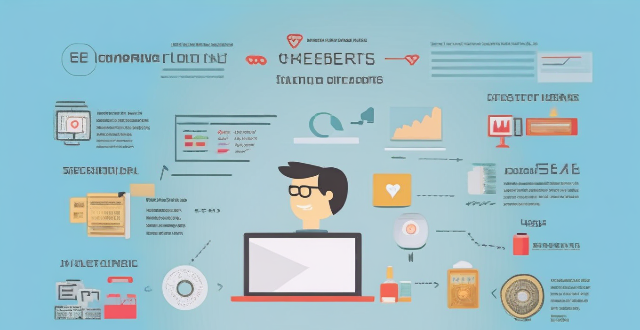
What is the Pomodoro Technique and does it really work for enhancing focus ?
The Pomodoro Technique is a time management method designed to improve focus and productivity. It involves working for 25 minutes followed by a short break, with longer breaks after every four Pomodoros. The technique aims to enhance concentration, manage time effectively, reduce procrastination, and boost overall productivity. However, its effectiveness can vary based on individual adaptability and workflow.
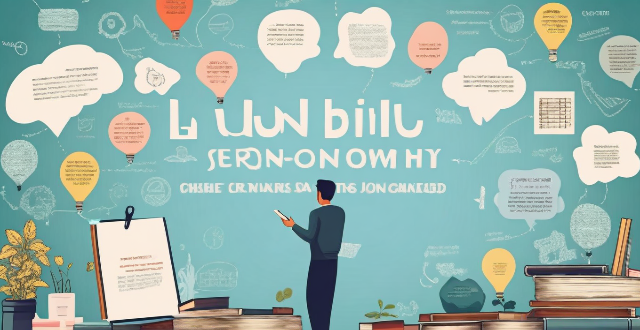
How can I build a strong knowledge framework in my field of study ?
To build a strong knowledge framework in your field of study, follow these steps: define your goals, conduct research, build a foundational understanding, connect ideas and concepts, apply your knowledge, and continuously learn. By doing so, you'll be able to think critically, solve complex problems, and contribute to the advancement of your field.

What is the relationship between biodiversity and traditional knowledge ?
The text discusses the complex interrelationship between biodiversity and traditional knowledge, highlighting how each influences and shapes the other in various ways. It explains that communities living in diverse ecosystems develop unique practices adapted to their surroundings, such as specific crop rotations or intercropping methods suited to local biodiversity. The availability of certain species also influences dietary habits, with coastal communities relying heavily on seafood while inland communities depend more on terrestrial resources. Furthermore, high biodiversity regions often lead to extensive knowledge about medicinal plants, with Indigenous communities having long histories of using local flora for healing. The need for sustainable harvesting of these plants can lead to traditional conservation practices like rotating harvest areas or planting more of certain species to ensure their survival. On the other hand, traditional knowledge often includes practices for managing resources sustainably, such as fishing techniques that do not deplete fish populations or agricultural methods that maintain soil fertility. In many cultures, certain areas are considered sacred and are protected from exploitation, serving as de facto conservation reserves. However, as biodiversity declines, so does the traditional knowledge associated with it. The loss of certain species can lead to the disappearance of associated cultural practices and knowledge. With diminished biodiversity, traditional knowledge becomes less effective, leaving communities vulnerable to ecological shifts. In conclusion, the relationship between biodiversity and traditional knowledge is one of mutual dependence and influence. While biodiversity shapes the development of traditional knowledge, this knowledge also plays a critical role in maintaining and conserving biodiversity. Preserving both is essential for the well-being of our planet and its people.
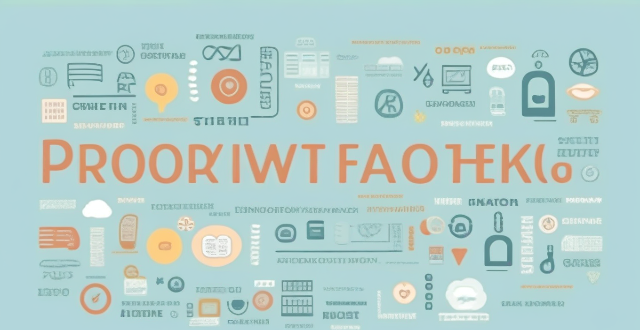
What are the key steps to constructing an effective knowledge framework ?
The text provides a structured approach to constructing an effective knowledge framework, which is essential for efficient learning, understanding, and application of knowledge. The key steps include identifying the core concepts, categorizing information, establishing connections, integrating new information, evaluating and refining the framework, and practicing application. It emphasizes that constructing a knowledge framework is an ongoing process that requires regular updates and refinements as one continues to learn and grow.

How do I integrate new information into my existing knowledge framework ?
Integrating new information into your existing knowledge framework is a crucial skill for learning and personal growth. Here are some steps you can follow to effectively incorporate new knowledge into what you already know: ## Identify Relevant Information 1. **Scan** the new information quickly to get an overview. 2. **Identify** key concepts, theories, or facts that relate to your current knowledge. 3. **Filter out** any irrelevant or redundant information. ## Connect with Existing Knowledge 1. **Activate** your prior knowledge by recalling similar concepts or experiences. 2. **Make connections** between the new information and what you already know. 3. **Create analogies** or metaphors to help relate the new information to familiar ideas. ## Evaluate and Organize Information 1. **Assess** the validity and reliability of the new information. 2. **Organize** the information in a way that makes sense within your existing framework. 3. **Categorize** the new knowledge based on its relevance and importance. ## Reflect and Consolidate 1. **Reflect** on how the new information affects your understanding or perspective. 2. **Consolidate** the new knowledge by summarizing it in your own words. 3. **Reinforce** the integration by explaining it to someone else or applying it in practice. ## Update Your Knowledge Framework 1. **Modify** your existing framework to accommodate the new information. 2. **Expand** your knowledge base by adding new categories or subtopics if necessary. 3. **Re-evaluate** the relationships between different pieces of knowledge within your framework. ## Practice and Apply 1. **Apply** the new knowledge in real-world situations to deepen your understanding. 2. **Practice** recalling and using the new information regularly. 3. **Seek feedback** from others to validate and refine your understanding further. By following these steps, you can effectively integrate new information into your existing knowledge framework, fostering continuous learning and intellectual growth.

How does a knowledge framework aid in learning and understanding complex topics ?
The text discusses the importance and benefits of using a knowledge framework to aid in learning and understanding complex topics. A knowledge framework is an organized structure that helps to categorize, relate, and prioritize information, serving as a mental model or conceptual map that guides the learning process. The importance of a knowledge framework includes facilitating organization, enhancing comprehension, promoting deeper analysis, and supporting critical thinking. The benefits of using a knowledge framework include simplifying information overload, building stronger associations, enabling better recall and application, improving memory retention, and facilitating application. The text also discusses the application of a knowledge framework in education and training, research and analysis, and professional settings. Overall, the development and utilization of a knowledge framework is crucial for anyone aiming to master challenging subjects and apply that knowledge effectively.

What is the relationship between ecological protection areas and traditional knowledge and practices ?
Ecological protection areas and traditional knowledge and practices are interconnected, with the latter serving as a vital resource for conservation efforts. These areas often contain valuable traditional knowledge developed by indigenous communities, which can aid in their effective management. Traditional knowledge encompasses agricultural practices, medicinal plants, sustainable hunting and fishing techniques, and land management methods. Ecological protection areas aim to preserve biodiversity and ecosystem services through legal means like national parks and nature reserves. The intersection of these two realms offers benefits for both conservation and cultural preservation, encourages community engagement, and creates economic opportunities through ecotourism. Integrating traditional knowledge into conservation strategies can lead to more effective and culturally sensitive management of ecological protection areas while preserving the cultural heritage of indigenous peoples.
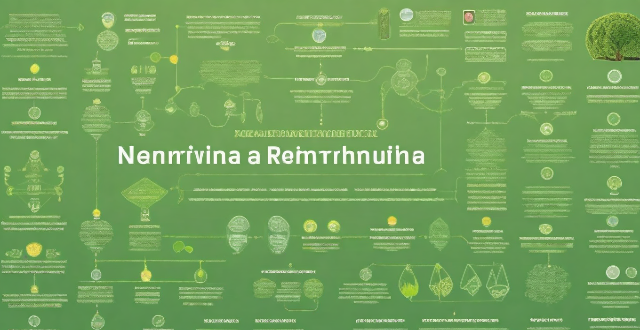
Can you provide examples of successful knowledge frameworks in various disciplines ?
Knowledge frameworks are structured approaches to organizing information within a field of study or practice. Successful examples include the human body systems in medicine, the OSI model in computer science, the language acquisition framework in linguistics, SWOT analysis in business, the ecosystem services framework in environmental science, and Bloom's Taxonomy in education. These frameworks facilitate specialized knowledge, standardize protocol development, guide teaching methods, support decision-making processes, highlight interdependence between natural systems and human well-being, and promote higher-order thinking skills.
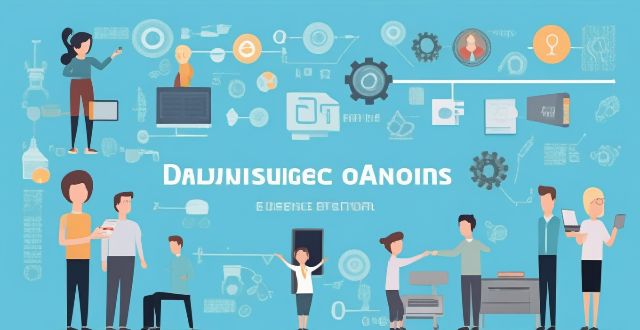
What challenges might I face when constructing a knowledge framework, and how can I overcome them ?
The text discusses the challenges in constructing a knowledge framework and provides solutions to these challenges. The challenges include identifying relevant information, structuring the framework, technical limitations, human factors, and maintenance and updates. The solutions suggested are using reliable sources, implementing filtering techniques, consulting with experts, using an iterative approach, visual mapping, modular design, custom development, flexible design, peer review, user testing, feedback loops, automated systems, dedicated teams, and regular reviews. By anticipating potential challenges and implementing appropriate solutions, you can create a robust and effective knowledge framework that supports learning, decision-making, and innovation within your domain.

How can I improve my breathing technique while swimming ?
Improving your breathing technique while swimming is crucial for better performance and endurance. Understand basics, practice proper rhythm, use core muscles, work on exhalation, do dryland training, visualize success, and seek professional guidance to enhance breathing and overall swimming skills.

Can reading about sports help improve one's own athletic performance ?
Reading about sports can enhance athletic performance by providing insights into techniques, strategies, and mental approaches. It helps in technique improvement, mental preparation, and injury prevention. To apply this knowledge, set clear goals, choose relevant resources, practice what you learn, and seek feedback for adjustments.

How does proper handwashing technique prevent the spread of germs ?
Proper handwashing is a simple yet effective way to prevent the spread of germs. It involves using soap and water to clean your hands thoroughly, especially before eating or preparing food, after using the restroom, and after being in contact with someone who is sick. The key points on how proper handwashing technique can help prevent the spread of germs include: - Wet your hands with clean, running water (warm or cold), turn off the tap, and apply soap. - Lather your hands by rubbing them together with the soap. Be sure to lather the backs of your hands, between your fingers, and under your nails. - Scrub your hands for at least 20 seconds. Need a timer? Hum the "Happy Birthday" song from beginning to end twice. - Rinse your hands well under clean, running water. - Dry your hands using a clean towel or air dry them. By following these steps, you can effectively remove dirt, viruses, and bacteria from your hands, which can help prevent the spread of germs that cause infections like the common cold and flu. Additionally, proper handwashing technique can also help prevent the spread of more serious illnesses such as COVID-19, Ebola, and norovirus.

What are some effective techniques for memorizing grammar rules ?
The article outlines various techniques for memorizing grammar rules effectively. It suggests methods such as repetition, using mnemonic devices, visualization, practice, teaching others, contextual learning, and taking regular breaks. Each technique is explained with examples and tips to make the learning process easier and more enjoyable. The article emphasizes the importance of consistency and patience in mastering grammar rules.

What are some tips for avoiding distractions while working on important tasks ?
To avoid distractions while working on important tasks, create a distraction-free environment by turning off your phone, closing unnecessary applications, and finding a quiet place. Set clear goals and priorities, use time management techniques like the Pomodoro Technique, minimize interruptions by informing others about your schedule, stay organized with tools like calendars and planners, and take care of yourself by getting enough sleep and taking regular breaks.
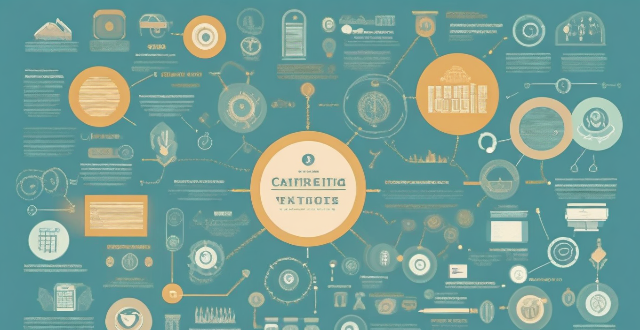
What are some common tools and techniques used in risk management ?
Risk management is a process that involves identifying, assessing, and prioritizing potential risks. There are various tools and techniques used in risk management, including brainstorming, Delphi method, checklists, qualitative and quantitative assessment, risk matrix, cost-benefit analysis, avoidance, reduction, transference, acceptance, continuous monitoring, and audits. These tools and techniques help organizations and individuals manage risks effectively and make informed decisions.
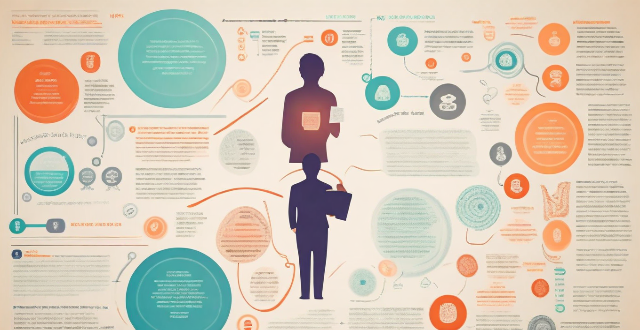
What are the key self-assessment techniques for personal growth ?
Self-assessment techniques help identify strengths, weaknesses, and areas for improvement. Key methods include reflecting on past experiences, setting goals and tracking progress, seeking feedback from others, keeping a journal or diary, and practicing mindfulness and self-awareness. These techniques provide different perspectives and help individuals understand their personal growth over time.
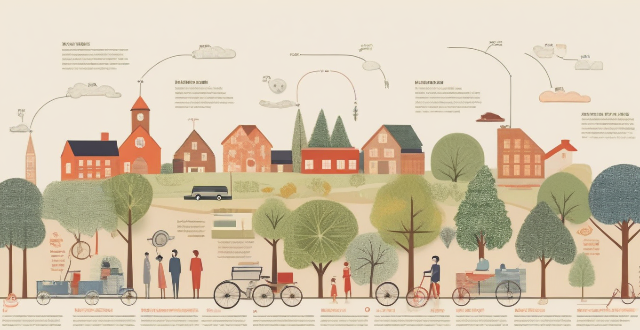
How can we involve marginalized communities in decision-making processes related to climate policy and action ?
Engaging marginalized communities in climate policy and action is crucial for their vulnerability to climate change, traditional knowledge, and promoting equity. Identify community leaders, incorporate local knowledge, enhance access to information, and foster collaboration. This ensures active involvement and equitable outcomes.

What are some common mistakes people make when learning to swim ?
When learning to swim, common mistakes include forgetting to breathe properly, tensing up too much, not using proper technique, and overestimating abilities. To avoid these mistakes, focus on deep breathing exercises, relaxing your body, seeking guidance from a qualified instructor, and staying within your comfort zone. With patience, practice, and proper technique, beginners can improve their skills and enjoy a safer and more enjoyable swimming experience.

What are the most common mistakes beginner bartenders make ?
The most common mistakes beginner bartenders make include incorrect measurement of ingredients, not knowing basic cocktail techniques, poor glassware choices, inconsistent drink quality, slow service, lack of knowledge about spirits and mixers, weak customer interaction, and neglecting cleanliness and organization. To avoid these errors, it's important to use measuring tools, learn basic techniques, familiarize yourself with different glassware, stick to recipes, practice speed racking, taste and study spirits and mixers, work on communication skills, and maintain a clean and organized workspace.

What are some strategies for studying for multiple subjects at once ?
Strategies for studying multiple subjects at once include creating a study schedule, using time management techniques, setting clear goals, employing active learning techniques, staying organized, taking care of oneself, and seeking help when needed. These methods can help maximize learning potential and manage time effectively.

What are some popular celebrity makeup techniques ?
Makeup techniques used by celebrities often set trends and become popular among the general population. Here are some of the most popular celebrity makeup techniques: 1. Contouring involves using makeup to create shadows and highlights on the face, which can help define features and enhance facial structure. This technique is often used by celebrities to achieve a more chiseled look. 2. Baking is a makeup setting technique where you apply a thick layer of translucent powder under the eyes and on high points of the face, let it sit for 5-10 minutes, and then brush it off. This technique helps to set the foundation and concealer, making them last longer. 3. Celebrities often opt for glossy lips to add a pop of color and make their lips appear fuller. This trend has been popularized by stars like Kylie Jenner and Rihanna. 4. Full, bold eyebrows have been in style for several years now, thanks to celebrities like Cara Delevingne and Lily Collins who have sported natural-looking, full brows. 5. Achieving a dewy, glowing complexion is another popular celebrity makeup technique. Stars like JLo and Kim Kardashian are known for their radiant skin. 6. Graphic eyeliner is a bold look that involves creating sharp, defined lines on the eyes. Celebrities like Bella Hadid and Kendall Jenner have made this trend popular.

How does background knowledge impact reading comprehension ?
Background knowledge significantly impacts reading comprehension by aiding in schema creation, vocabulary recognition, contextual understanding, inferencing, and increasing engagement with the material.

What are the basic techniques used in Chinese cooking ?
Chinese cuisine is known for its diverse flavors and cooking techniques. Here are some of the basic techniques used in Chinese cooking: 1. Stir-frying involves quickly frying small pieces of food in a wok or frying pan over high heat. The key to successful stir-frying is to use hot oil, fresh ingredients, and constant motion to prevent burning. 2. Steaming involves placing food in a steamer basket over boiling water and allowing it to cook through steam. This method is often used for dumplings, buns, fish, and vegetables. 3. Braising is a slow-cooking method that involves simmering meat or vegetables in liquid until they become tender and flavorful. This technique is often used for stews, soups, and braises. 4. Deep-frying involves submerging food in hot oil until it becomes crispy and golden brown. This technique is often used for fried rice, spring rolls, and tempura dishes. 5. Roasting involves cooking food in an oven at high temperatures until it becomes caramelized and tender. This technique is often used for roasted meats, vegetables, and baked goods like mooncakes and egg tarts.
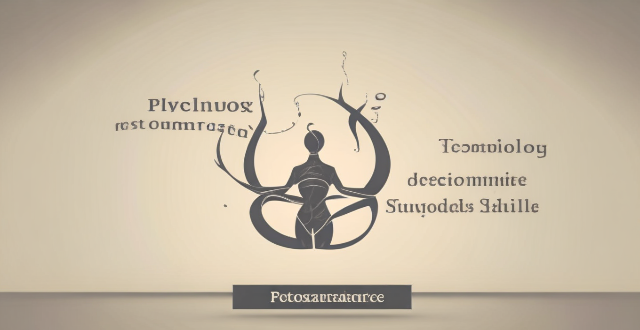
Can sports psychology techniques be applied to non-athletes for general well-being ?
Sports psychology techniques can improve non-athletes' well-being by setting goals, visualizing success, using positive self-talk, practicing mindfulness, and relaxation techniques.

Is strength training safe for beginners ?
Strength training is a form of exercise that can provide numerous benefits, including increased muscle mass and strength, improved bone density, better body composition, reduced risk of injury, and enhanced athletic performance. However, it is essential to take safety measures to prevent injuries from improper technique or overexertion. Before starting any new exercise program, consult with a healthcare professional to ensure that you are healthy enough to participate. Start slowly and gradually increase intensity, focus on proper technique, warm up and cool down properly, and listen to your body. By following these tips, beginners can safely start strength training and enjoy its many benefits while minimizing the risk of injury.

How will interstellar exploration impact our understanding of the universe and our place within it ?
Interstellar exploration is a quest to understand the universe and our place in it. It has the potential to revolutionize scientific knowledge by unraveling cosmic origins, understanding planetary systems, and advancing physics. It can also impact human perspective by realizing our place in the cosmos, cultural and philosophical implications, and ethical considerations. Interstellar exploration stands at the threshold of transforming our knowledge and perceptions, pushing the boundaries of science, and reshaping humanity's self-image.

What are some creative composition techniques for iPhone photography ?
Creative composition techniques for iPhone photography include the rule of thirds, leading lines, symmetry and patterns, frame within a frame, filling the frame, rule of odds, negative space, motion blur, playing with perspective, and using color and contrast. These techniques help create more balanced and interesting photos, draw attention to the subject, and add visual interest. By incorporating these techniques into iPhone photography, stunning images can be captured that stand out from the crowd.